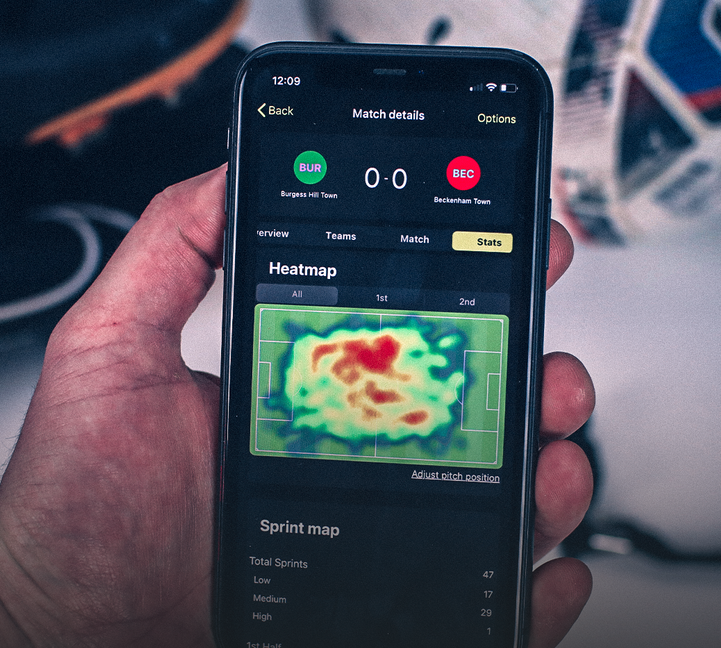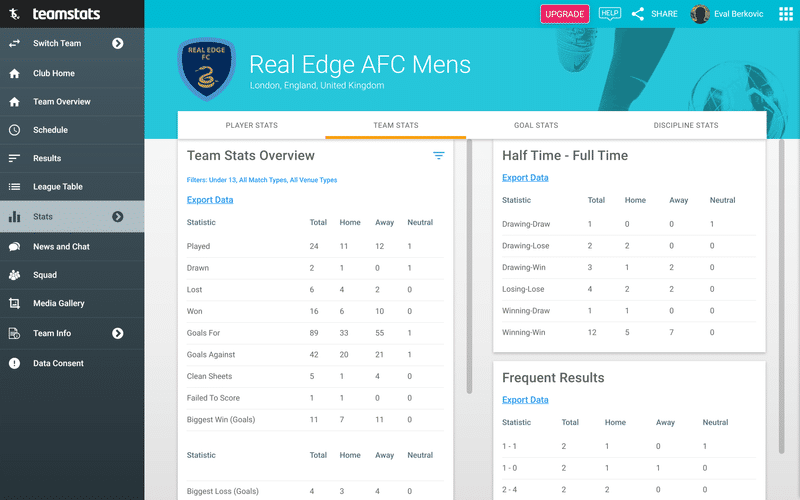Football has entered a new era, where intuition and experience are now complemented by advanced analytics. Coaches, players, and analysts can study detailed data about possession, passing patterns, pressing intensity, and positional heatmaps to gain insights that were previously hidden. This information helps clubs prepare for opponents with precision, ensuring that tactical decisions are not based solely on instinct. By turning numbers into strategy, teams can identify weaknesses in rivals, highlight their own strengths, and make game plans that improve the chances of success on the pitch.
From Data to Tactical Application
The key to analytics lies in converting raw information into actionable tactics. For example, if data shows that an opponent struggles under high pressing, a coach might instruct their forwards to press more aggressively in the next game. Likewise, a heatmap of opposition movements may reveal gaps in midfield, encouraging a more central attacking strategy. The best coaches do not just look at statistics in isolation—they combine them with video analysis and player feedback. In doing so, they turn complex information into simple, executable instructions for their squad.
Developing Tactical Thinking Beyond the Pitch
While analytics provides powerful tools, tactical thinking can also be improved in other ways. Many players and fans enhance their understanding by playing online football games, which simulate real-world tactical scenarios. Others take it further by studying professional matches and predicting outcomes, sometimes through online betting. This is where betting exchange sites have become particularly popular, offering odds that reflect the dynamic nature of football. Unlike traditional outlets, these platforms allow users to both back and lay outcomes, making the experience more strategic and closely tied to tactical reasoning.
Understanding Possession and Tempo
Possession statistics are often the starting point for tactical analysis. A team that dominates the ball but fails to create chances might be focusing too much on control without penetration. Conversely, a side with less possession but higher shot efficiency may be more effective on the counterattack. By studying these patterns, coaches can decide whether to slow the tempo, maintain possession, or encourage quicker transitions. Tactical adjustments based on possession data are often the difference between a team that looks comfortable and one that struggles to create clear opportunities.
Analysing Player Roles
Modern analytics also breaks down individual contributions. Midfielders can be evaluated by pass completion rates and pressing recoveries, while strikers are judged on expected goals and shot quality. Defenders now have metrics such as interceptions, aerial duels won, and progressive passes into attack. By analysing these figures, managers can refine roles within their system. A full-back with strong attacking metrics might be encouraged to push higher, while one with defensive strengths could be instructed to stay deeper. Tailoring tactics to suit player attributes maximises efficiency across the team.
Heatmaps and Spatial Awareness
Heatmaps are among the most visually striking tools in football analytics. They display where players spend the majority of their time on the pitch, making it clear how effective certain zones are being exploited. If a winger consistently stays wide but the data shows little delivery into the box, adjustments can be made to cut inside more often. Similarly, spotting unused spaces in the opponent’s half can inspire targeted tactical changes. By understanding spatial trends, teams are better able to predict how matches might unfold and prepare accordingly.
Transition Play and Counterattacks
Transition phases—what happens immediately after winning or losing possession—are critical moments in modern football. Analytics can highlight how quickly a team reacts to these shifts, showing whether they press effectively after losing the ball or exploit counters after regaining it. For instance, a high turnover-to-shot ratio suggests a strong counterattacking side, while a poor ratio signals wasted opportunities. Coaches can adjust training drills to sharpen these moments, improving the team’s ability to seize momentum. These insights are vital in tailoring next-game tactics against fast-paced or counter-heavy opponents.
Set-Piece Analysis
Set-pieces continue to be a decisive factor in matches, and analytics has transformed how teams approach them. By studying opposition tendencies—whether they mark zonally or man-to-man, and where they are most vulnerable—teams can design routines tailored to exploit weaknesses. Equally, analysing their own defensive structure helps to identify risks. With data-driven preparation, a team might target back-post overloads, short corner variations, or near-post flick-ons. The detail behind set-piece analytics shows how small adjustments can generate huge advantages over the course of a season.
Tracking Fitness and Work Rate
Beyond tactics, analytics is also essential in monitoring player fitness and work rate. GPS tracking provides data on distance covered, sprint counts, and intensity levels. This helps coaches manage workload to prevent fatigue while maintaining tactical efficiency. A player who runs more without contributing effectively might be reassigned to a role better suited to their attributes. Conversely, standout fitness levels can be used tactically to exploit tired opponents late in games. Tailoring strategies to physical data ensures that tactical plans remain realistic and sustainable.
Preparing for the Next Opponent
The ultimate aim of analytics is to prepare specifically for each upcoming opponent. By studying their weaknesses, preferred formations, and recent results, teams can tailor their approach with precision. If a rival struggles against aerial balls, long passes may be emphasised. If their full-backs push forward, counterattacking through wide areas becomes an option. Combining all available data allows coaches to devise strategies that are both proactive and reactive, ensuring that their team takes to the pitch with a clear tactical plan.
The Future of Tactical Analytics
As football continues to evolve, the role of analytics will only expand. Artificial intelligence, machine learning, and real-time tracking are already being integrated into analysis, promising even deeper insights for coaches. For players and fans alike, the combination of tactical awareness and interactive tools such as football simulations or online platforms will continue to bridge the gap between professional preparation and everyday engagement. In tailoring next-game tactics, analytics has become not just a supporting element but a central pillar of modern football strategy.


















